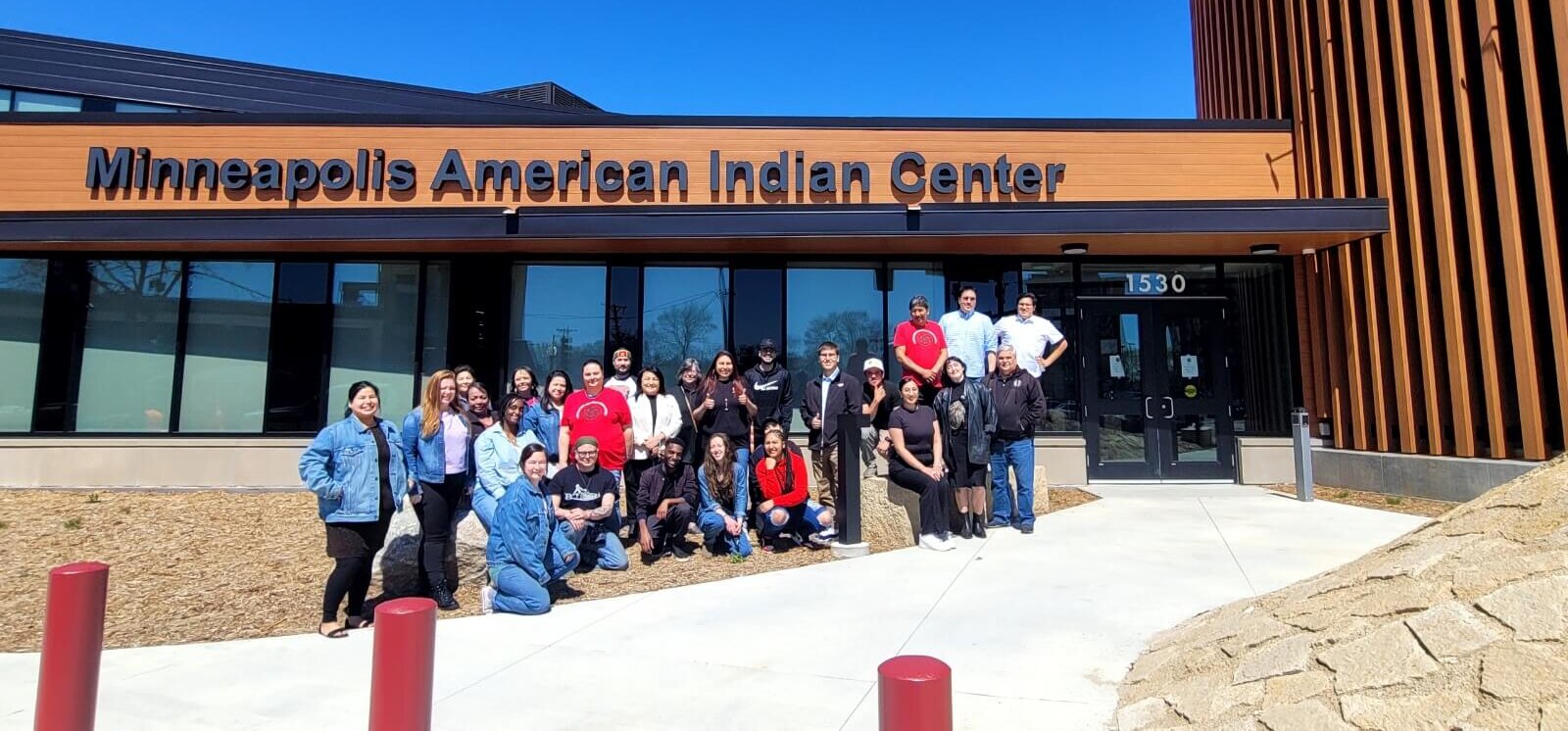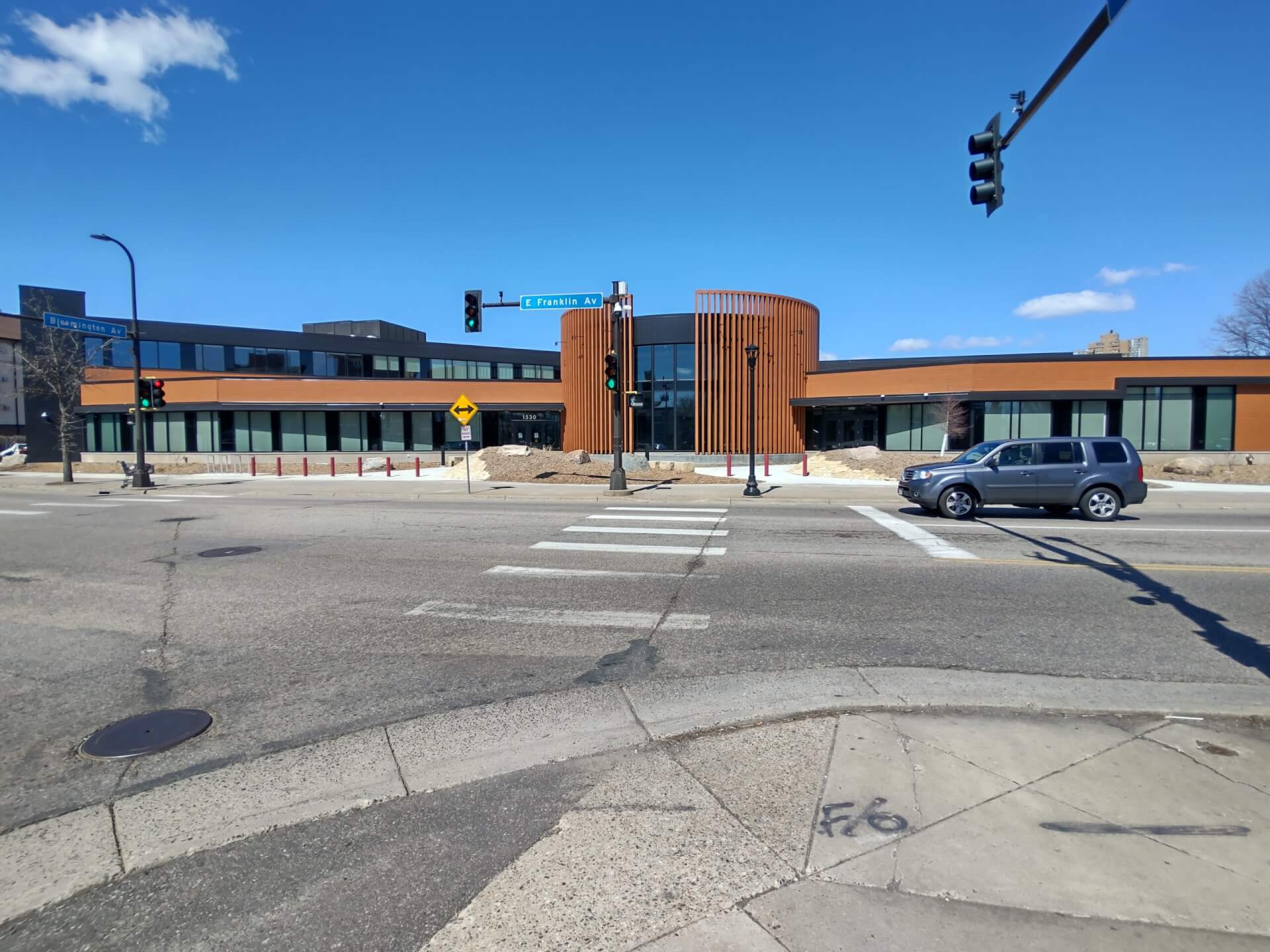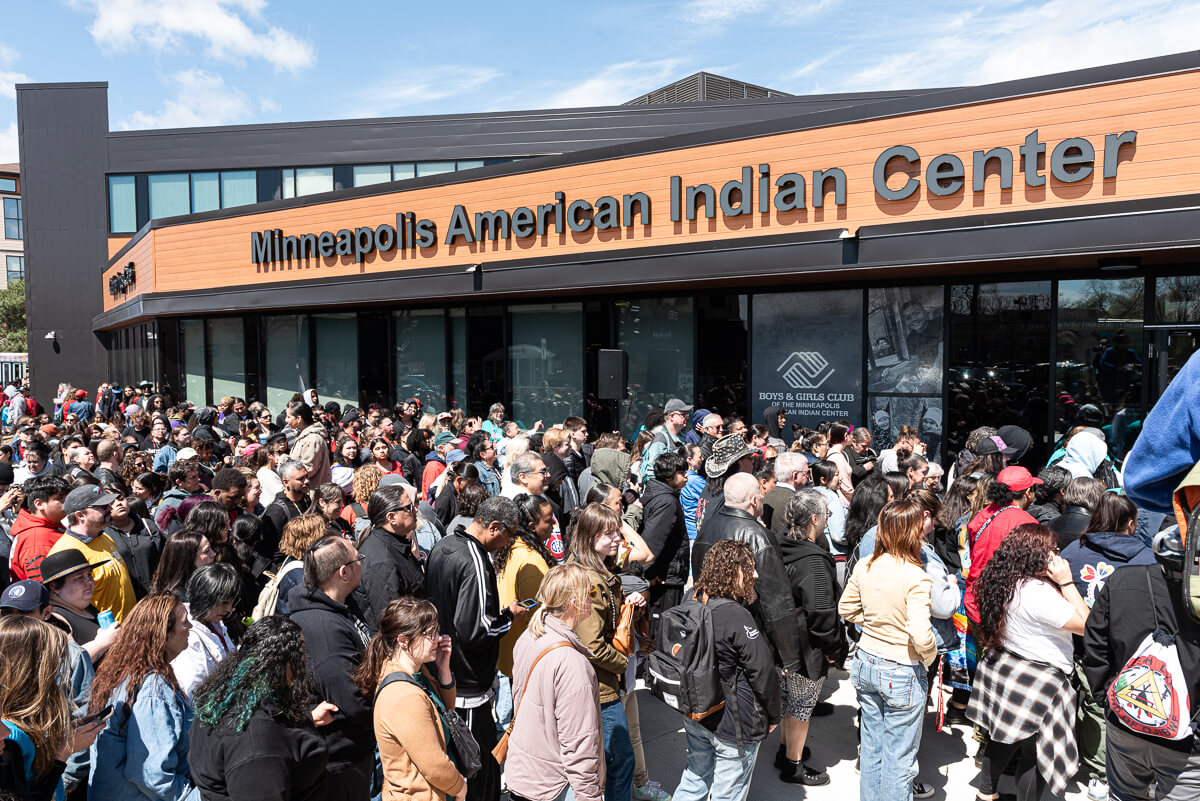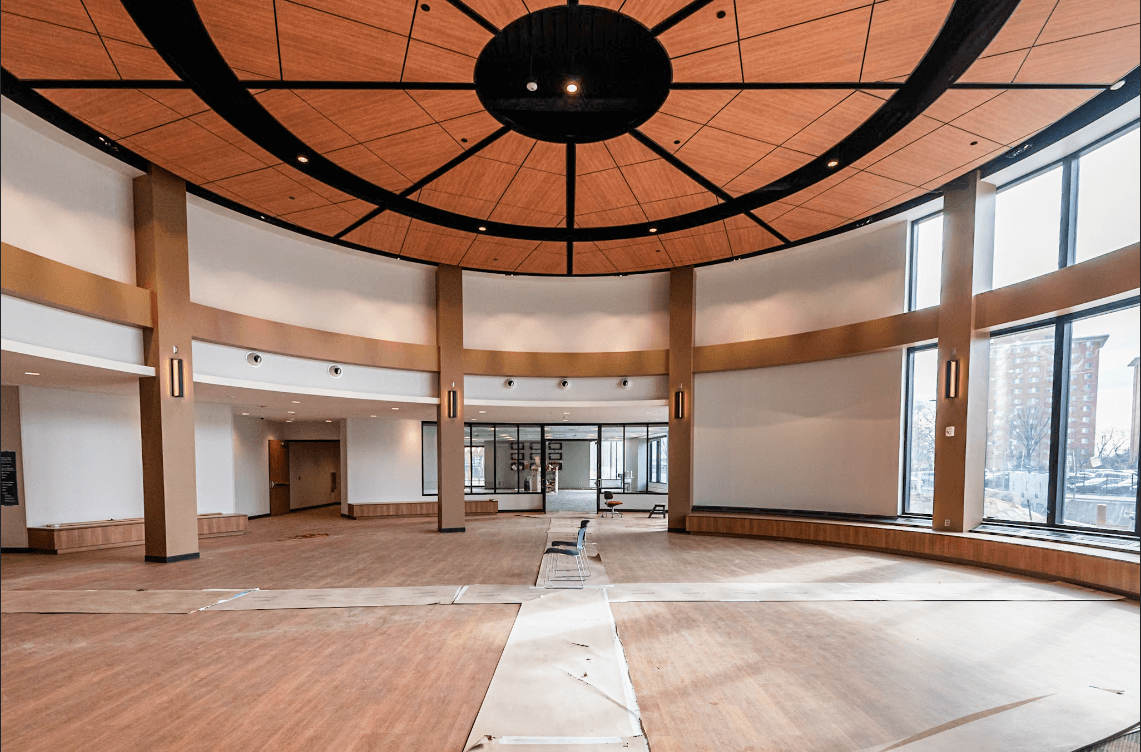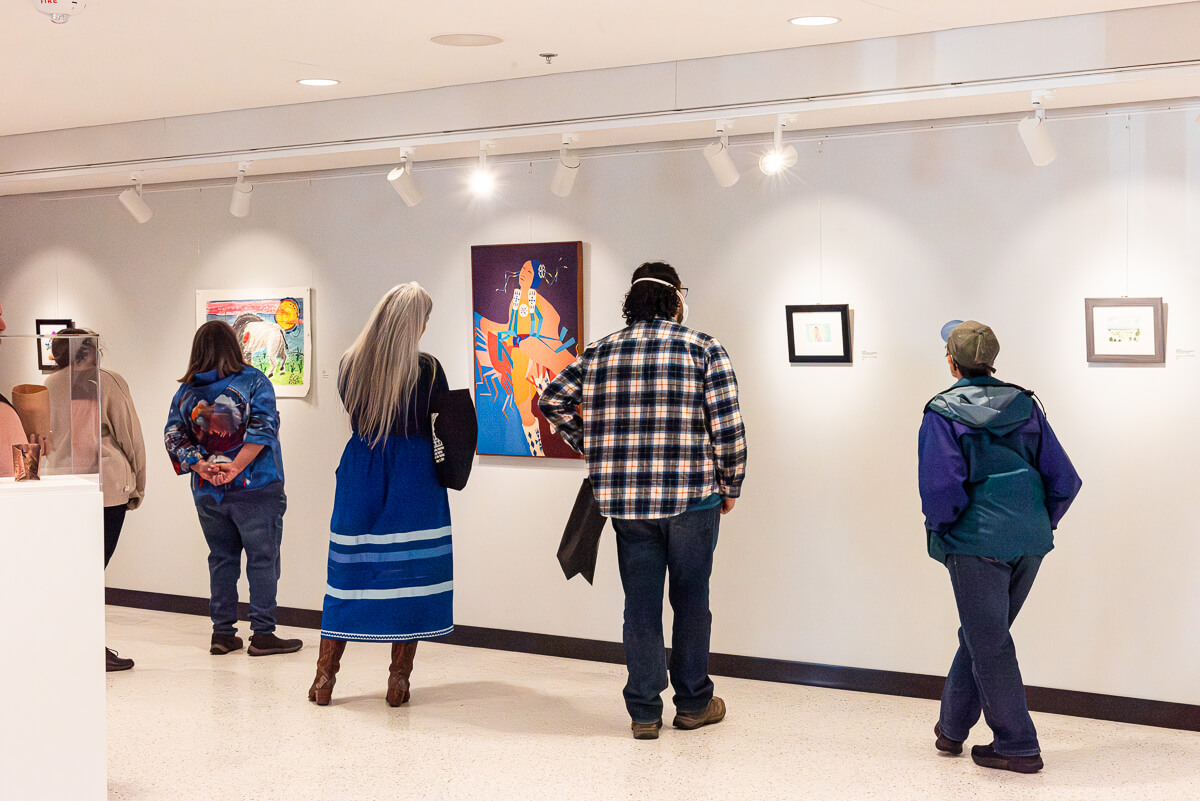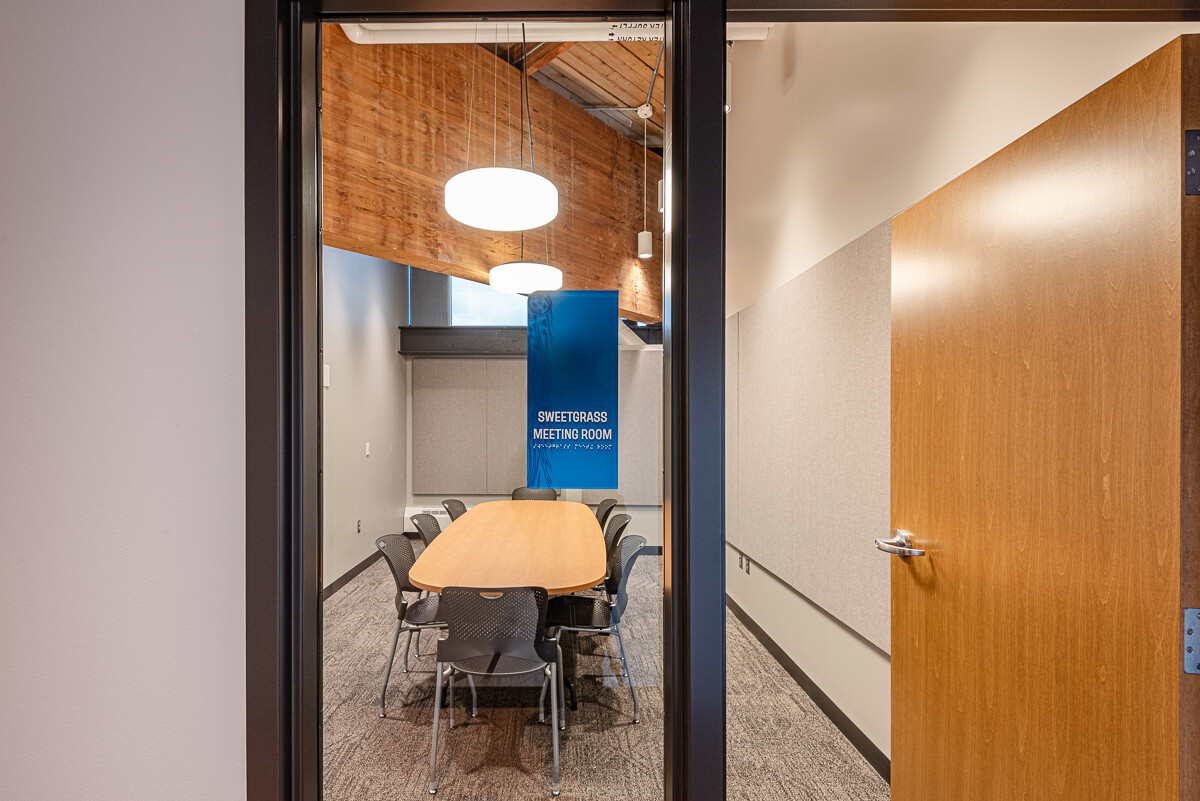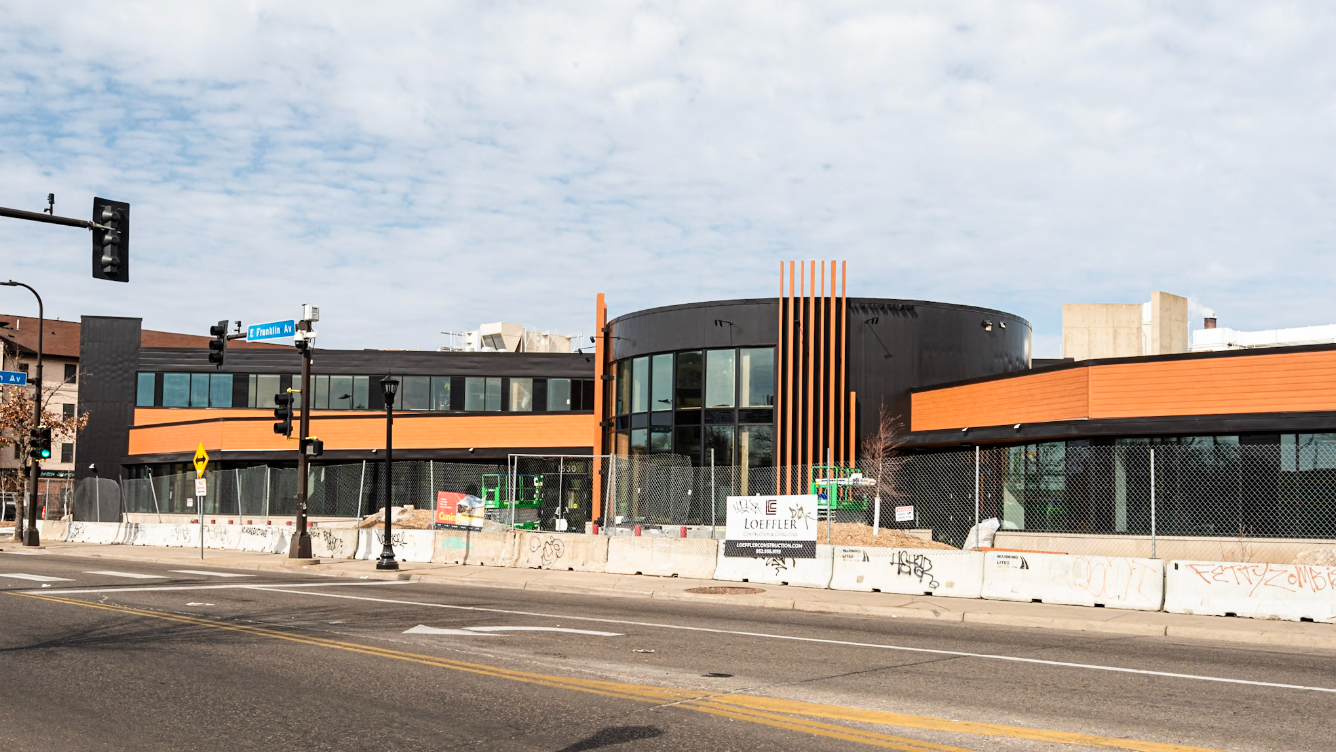By Amanda Theisen
When the Minneapolis American Indian Center first opened in 1975, it was billed as one of the first urban American Indian Centers in the United States. Located off Franklin Avenue, the building stood close to communities that were home to American Indians living in the Minneapolis-St. Paul urban core, along with the 11-county metro area.
The MAIC has welcomed thousands of visitors for events, programs, gatherings and educational activities promoting the various cultures that make up Minnesota’s American Indian communities. After decades of use and activity, the building also needed maintenance repairs and upgrades to continue serving the community.
 On May 1, the Minneapolis American Indian Center reopened to the public after undergoing a two-year, $32 million renovation and expansion. Sunrise Banks helped contribute financing for the project with $12 million of New Market Tax Credit (NMTC) allocation and $11.3 million of bridge loan financing.
On May 1, the Minneapolis American Indian Center reopened to the public after undergoing a two-year, $32 million renovation and expansion. Sunrise Banks helped contribute financing for the project with $12 million of New Market Tax Credit (NMTC) allocation and $11.3 million of bridge loan financing.
“Our financial commitment to this project reflects our commitment to investing in low-to-moderate-income communities and empowering their financial wellness,” says Mary Stoick, Senior Vice President and Director of Tax Credit Lending at Sunrise Banks. “By committing NMTC allocation to this project, we helped the Minneapolis American Indian Center position itself to serve Minnesota’s Indigenous communities more fully, with better programs, services and amenities for decades to come. This is the heart of our mission at Sunrise Banks and as a Community Development Financial Institution (CDFI).”
Long list of new features
The expanded MAIC is nearly double the size of the original building. It features many upgrades, including an expanded gymnasium, a fitness center, new conference rooms and meeting centers, and dedicated space for kids and teens, including a Best Buy Teen Tech Center housed within the Boys and Girls Club program.
The Gatherings Café, the on-site restaurant and catering space at MAIC, will also have a larger kitchen and dining area for visitors and special events.
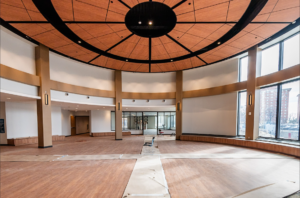 One centerpiece of the new MAIC space is the rotunda. It will be used as a public gathering space, as well as a place for private events. The rotunda features an intricate ceiling design called The Drum. Sam Olbekson, board president for MAIC and a member of the White Earth Band of Ojibwe, designed the rotunda and the full building remodel guided by community input on what they wanted the space to be.
One centerpiece of the new MAIC space is the rotunda. It will be used as a public gathering space, as well as a place for private events. The rotunda features an intricate ceiling design called The Drum. Sam Olbekson, board president for MAIC and a member of the White Earth Band of Ojibwe, designed the rotunda and the full building remodel guided by community input on what they wanted the space to be.
“Sam is one of a handful of Native architects in the country,” explains Mary LaGarde, executive director of the MAIC and member of the White Earth Band of Ojibwe.
The MAIC is also home to the Two Rivers Gallery, which now has a larger space on the first floor.
“We’ll use this space to showcase our local Indigenous artists who maybe haven’t had a chance yet to display their work,” says LaGarde.
Preserving the past
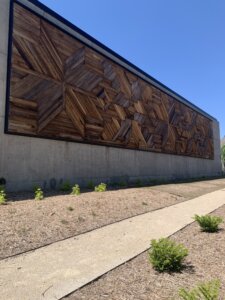 While much of the space is brand new, the MAIC staff took great care to preserve important artwork.
While much of the space is brand new, the MAIC staff took great care to preserve important artwork.
One of the center’s most prominent murals, the George Morrison Mural, previously sat above the doors to the MAIC’s gymnasium. An anonymous donor gave $30,000 to have the cedar wood mural restored. During the renovation phase, crews carefully took down the mural, piece by piece, and shipped them all to a lab in Montana. There, a team carefully cleaned and restored each piece before sending them back to Minnesota. Crews then reinstalled the mural on the east side of the building.
LaGarde says the center hopes donors step forward to help protect and preserve this mural and other important center features for future generations.
“The mural means a lot to so many people, and it was important to us that the mural be preserved and kept outside so it’s as accessible as possible,” said LaGarde. “The mural is also a staple of the center itself. Much of the signage we designed during the renovation incorporate aspects of George Morrison’s mural.”
Rooms and signs with meaning
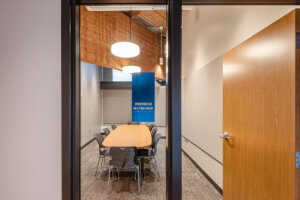 The rooms throughout the MAIC are named after special people, places and things in Indigenous cultures. For example, two conference rooms, separately called the Grandmother Room and Grandfather Room, become the Grandparents’ Room when they are combined into one large space.
The rooms throughout the MAIC are named after special people, places and things in Indigenous cultures. For example, two conference rooms, separately called the Grandmother Room and Grandfather Room, become the Grandparents’ Room when they are combined into one large space.
LaGarde says naming the rooms started out as a difficult process but ended with a creative solution.
“When we surveyed our community members, Dakota members wanted the room names in the Dakota language, Ojibwe members wanted them in the Ojibwe language, and so on,” she says. “So, we had to figure out a way to incorporate their wishes.”
The signs outside each room feature Indigenous-designed icons, along with the room names in English and a QR code. Visitors can scan the code to hear the room names pronounced in Dakota and Ojibwe.
Welcoming back the community
Now that the MAIC is open after the two-year project, LaGarde is excited to welcome back friends, elders and new members of the community.
“The center has been an important community space for decades, and we’ve provided critical programs and resources during that time. This historic renovation sets us up to continue supporting the community for generations to come,” LaGarde said.
“The best part of my job is seeing a project come to full fruition and launch services to the community,” says Stoick. “We are so proud to help preserve and renovate this amazing space and support MAIC’s work in serving American Indians. This place has been and will continue to be a beacon of hope in Minnesota.”
The Minneapolis American Indian Center is located in a neighborhood that benefits from the Sunrise Banks Impact Deposit Fund. As a Certified Community Development Institution (CDFI), 60% of our lending benefits customers, businesses and projects in low to moderate-income communities.
Amanda Theisen is the communications manager at Sunrise Banks.
All photos courtesy of the Minneapolis American Indian Center.

